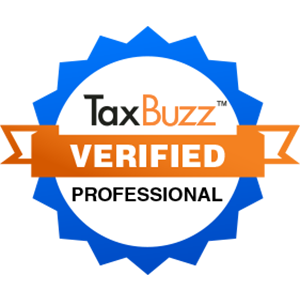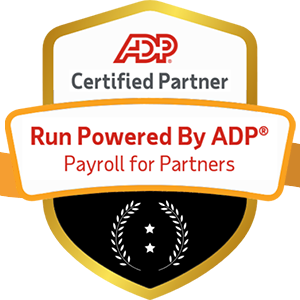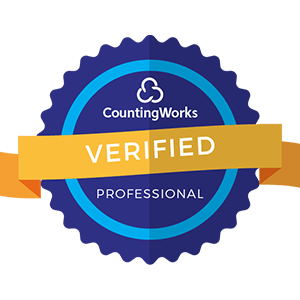
Change is inevitable in any organization. As business needs shift and new technologies emerge, companies must adapt their systems, processes, and employee behaviors accordingly. This is especially true for core functions like human resources, payroll, and finance, which serve as the backbone of an organization. When significant changes come to these areas, they can significantly impact employees, leaders, and the business overall.
That's why savvy managers make change management a priority. With careful planning and execution, they can pave the way for successful transitions that align with strategic goals. This blog will explore proven change management strategies for ushering in new HR, payroll, and finance systems, technologies, and processes.
Change management refers to the framework for transitioning individuals and organizations from a current state to a desired future state. This involves systematic planning and supportive interventions to empower employees to adopt the change.
For HR, payroll, and finance functions, change management is critically important for several reasons:
With so much at stake, organizations undertaking major HR, payroll, and finance changes without change management put their success at risk. Let’s examine some proven strategies for mitigating this risk.

The first step in any organizational change is assembling a cross-functional team to steer the process. This team should include senior leaders and personnel from HR, finance, IT, communications, training, and operations. Outside change management consultants can also provide helpful expertise.
For HR and payroll changes, include managers and front-line staff representing different business units and roles. They can share firsthand workflow insights and spot potential adoption challenges.
Change management expert Mike Klein said, “The team needs to understand stakeholder objections, concerns, and reservations about the upcoming change. Addressing these issues removes obstacles and intensifies buy-in across the organization."
Once assembled, this team spearheads and coordinates all aspects of the change management process in lockstep with implementation. This requires excellent project management discipline to keep efforts aligned on budget, scope, and timeline.
While the change management team should represent a cross-section of the organization, there are a few key roles to ensure are covered:
Covering these primary roles with diverse team members and supporting them sets up a sound structure for navigating successful change.

Next, the team needs to conduct a thorough impact assessment. This evaluates how the proposed HR, payroll, or finance change will impact processes, technology, departmental interactions, job roles, and employees on individual and organizational levels.
The team should interview stakeholders in various functions and departments to collect insights on potential challenges. As Carolyn Taylor of The State of Change Management 2020 report explained, "Leaders often underestimate impacts that seem clear to staff closer to operations.”
Some techniques the team can use for impact assessment include:
Taking the time upfront to assess change impacts through these and other techniques thoroughly helps the team anticipate and address disruption proactively.
In addition to identifying change impacts, the team must define specific change management goals and metrics. These may include:
Defining measurable goals upfront allows the team to gauge progress, demonstrate ROI, and refine strategies throughout the rollout.

HR, payroll, and finance changes often spark uneasy rumors among employees concerned about job impacts. The change management team must get ahead of the grapevine through early, frequent, and transparent communication.
Immediate awareness-building tactics may include:
As the rollout approaches, communications should ramp up to build genuine excitement. Ongoing tactics may include:
Leadership advisor Galen Emanuele states, “Two-way communication is vital throughout the change process. Employees should have forums to express concerns, and leaders must close the feedback loop.” This demonstrates the company is listening and responsive.
When formulating communications plans, the change management team should consider tailored strategies for different audiences, including:
Executives - Focus on high-level benefits and competitive advantages of the change for leadership buy-in.
Middle Managers - Provide detailed talking points to help them inform direct reports and spot potential team impacts.
Frontline Employees - Prioritize transparency around rationale, timeline, and job expectations to reduce uncertainty.
Technical Teams - Share specifics around system changes and provide advanced training where
needed.
Remote Employees - Utilize digital channels and informal peer-to-peer communications to keep
these employees engaged.
Field/Sales Employees - Highlight customer benefits and provide remote support to help them
become change advocates.
Tailoring communication style, content, and channels for these audiences improves the relevance and retention of messaging. It also helps identify which groups need additional support.
Hands-on training helps employees understand how to use new HR, payroll, and finance systems and comply with process changes. The earlier this training starts, the better.
The change management team should work closely with HR Learning & Development teams to develop training plans, content, and schedules. Tactics may include:
Brandon Hall Group states, "Organizations that offer employees ample training opportunities see 3.5x greater change adoption rates than those with poor training." Prioritizing education demonstrates the company's commitment to employee success.
Some creative training techniques to explore include:
Gamification - Increase engagement by incorporating games, contests, rewards, and friendly competition.
Microlearning - Break training into brief, focused video modules that can be consumed as needed.
Virtual reality - Immersive VR simulations allow hands-on practice in a risk-free environment.
Peer coaching - Employees often prefer to learn from peers over formal trainers. Facilitate knowledge sharing.
Video role plays - Film colleagues demonstrating ideal behaviors and letting employees compare against their own recorded role plays.
Chatbots - AI-powered chatbots can be available 24/7 to answer common training questions.
Exploring creative delivery methods like these often improves training outcomes and promotes positive perceptions of the change.
Change doesn't happen through top-down communications alone. Organizations should identify, equip, and leverage change champions throughout the rollout.
These influential employees can be managers, high-performers, or respected personalities. The change team provides in-depth training, talking points, and participation opportunities. This empowers champions to share their excitement, gather feedback, and support adoption in their spheres of influence.
As internal evangelists, champions help make change feel less imposed. They also provide critical insights on how messaging, training, and support resonate with different employee segments. Keeping a diverse group of champions engaged helps spot and address adoption barriers.
According to the Journal of Accountancy, “Companies that enlist and empower change champions reap both greater returns from transformations and stronger connections between leadership and employees.” This grassroots approach is a change management best practice.
So, how does the team identify potential change champions? Some tips include:
Look for informal influencers - Consider who colleagues gravitate to for advice and support, regardless of role. Their reputations can lend credibility.
Recruit tech-savvy personnel - Digitally fluent employees can translate concepts to less tech-comfortable peers.
Enable early participation - Let interested personnel pilot systems or preview training to become de facto experts.
Assess communication styles - Opt for champions who share information comfortably yet thoughtfully.
Review org charts - Ensure champions sprinkle each department, location, and employee demographic.
Casting a wide net for champions prevents silos and expands the initiative’s reach
The initial rollout is just the beginning of any significant HR, payroll, or finance change. The change management team needs to monitor adoption metrics, gather ongoing feedback, and adjust strategies when necessary.
Tactics for this include:
Based on these inputs, the team can move quickly to refine training content, bolster communications in problem areas, hold adoption competitions, or take other actions to drive success.
This iterative process continues even after significant project milestones. Continuous reinforcement and tweaks help changes take permanent root within the organization.
A valuable approach for monitoring change is developing a scorecard to regularly audit progress across variables like:
Auditing these adoption indicators quantitatively and through discussions with managers provides objective insights on where more support may be needed. To ensure sustained benefits, scorecards should be revisited regularly, even months after launch.
Major transformations only work long-term if an agile, change-capable workplace culture underpins them. This requires ongoing focus from leadership.
Tactics for nurturing change-capable culture include:
McKinsey & Company research states, “Organizations that build change capabilities into their culture are 3.5x more likely to report successful transformations.” This directly impacts HR, payroll, finance, and broader company performance.
Some signs that an organization has developed a flexible, change-ready culture include:
Reinforcing these behaviors ensures changes can be implemented smoothly repeatedly, even as needs evolve
Implementing significant changes in HR, payroll, and finance functions involves investing in new technology and redesigning processes. Organizations must incorporate proven change management approaches to minimize disruption and drive strategic benefits.
This involves careful planning, multi-channel communications, comprehensive training, grassroots support, and cultural reinforcements. With a structured yet flexible approach, companies can smooth bumps in the change journey and accelerate adoption. This empowers employees and unlocks the full performance potential of transformed HR, payroll, and finance functions.
In today’s fast-paced business world, standing still is never an option. Organizations that consistently apply strong change management are best positioned to evolve these foundational functions smoothly and successfully.


